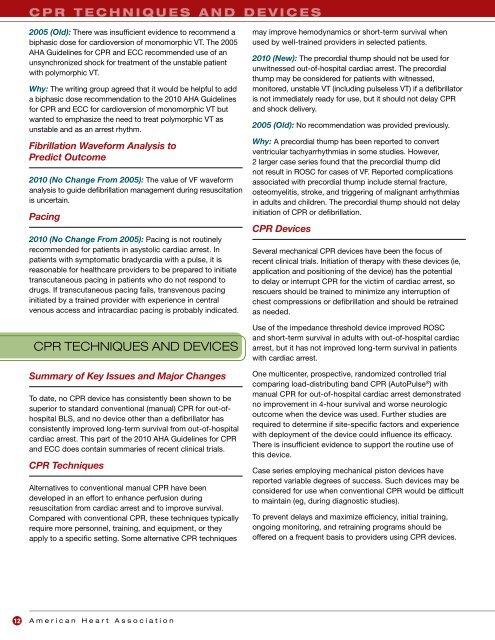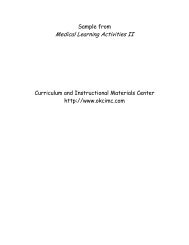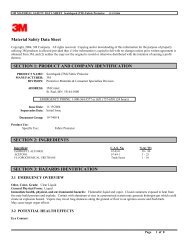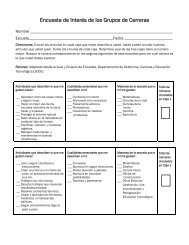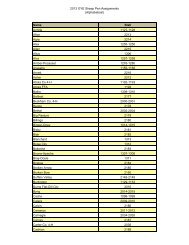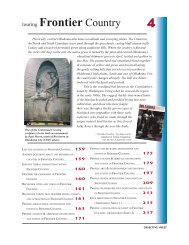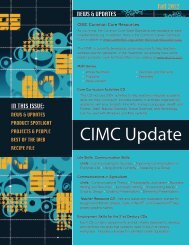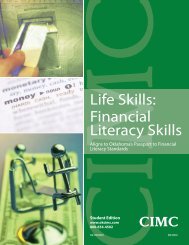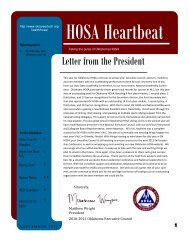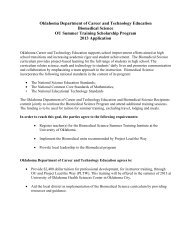Highlights of the 2010 Guidelines for CPR and ECC - ECC Guidelines
Highlights of the 2010 Guidelines for CPR and ECC - ECC Guidelines
Highlights of the 2010 Guidelines for CPR and ECC - ECC Guidelines
You also want an ePaper? Increase the reach of your titles
YUMPU automatically turns print PDFs into web optimized ePapers that Google loves.
c p r t e c h n i q u e s a n d d e v i c e s<br />
2005 (Old): There was insufficient evidence to recommend a<br />
biphasic dose <strong>for</strong> cardioversion <strong>of</strong> monomorphic VT. The 2005<br />
AHA <strong>Guidelines</strong> <strong>for</strong> <strong>CPR</strong> <strong>and</strong> <strong>ECC</strong> recommended use <strong>of</strong> an<br />
unsynchronized shock <strong>for</strong> treatment <strong>of</strong> <strong>the</strong> unstable patient<br />
with polymorphic VT.<br />
Why: The writing group agreed that it would be helpful to add<br />
a biphasic dose recommendation to <strong>the</strong> <strong>2010</strong> AHA <strong>Guidelines</strong><br />
<strong>for</strong> <strong>CPR</strong> <strong>and</strong> <strong>ECC</strong> <strong>for</strong> cardioversion <strong>of</strong> monomorphic VT but<br />
wanted to emphasize <strong>the</strong> need to treat polymorphic VT as<br />
unstable <strong>and</strong> as an arrest rhythm.<br />
Fibrillation Wave<strong>for</strong>m Analysis to<br />
Predict Outcome<br />
<strong>2010</strong> (No Change From 2005): The value <strong>of</strong> VF wave<strong>for</strong>m<br />
analysis to guide defibrillation management during resuscitation<br />
is uncertain.<br />
Pacing<br />
<strong>2010</strong> (No Change From 2005): Pacing is not routinely<br />
recommended <strong>for</strong> patients in asystolic cardiac arrest. In<br />
patients with symptomatic bradycardia with a pulse, it is<br />
reasonable <strong>for</strong> healthcare providers to be prepared to initiate<br />
transcutaneous pacing in patients who do not respond to<br />
drugs. If transcutaneous pacing fails, transvenous pacing<br />
initiated by a trained provider with experience in central<br />
venous access <strong>and</strong> intracardiac pacing is probably indicated.<br />
<strong>CPR</strong> TECHNIQUES AND DEVICES<br />
Summary <strong>of</strong> Key Issues <strong>and</strong> Major Changes<br />
To date, no <strong>CPR</strong> device has consistently been shown to be<br />
superior to st<strong>and</strong>ard conventional (manual) <strong>CPR</strong> <strong>for</strong> out-<strong>of</strong>hospital<br />
BLS, <strong>and</strong> no device o<strong>the</strong>r than a defibrillator has<br />
consistently improved long-term survival from out-<strong>of</strong>-hospital<br />
cardiac arrest. This part <strong>of</strong> <strong>the</strong> <strong>2010</strong> AHA <strong>Guidelines</strong> <strong>for</strong> <strong>CPR</strong><br />
<strong>and</strong> <strong>ECC</strong> does contain summaries <strong>of</strong> recent clinical trials.<br />
<strong>CPR</strong> Techniques<br />
Alternatives to conventional manual <strong>CPR</strong> have been<br />
developed in an ef<strong>for</strong>t to enhance perfusion during<br />
resuscitation from cardiac arrest <strong>and</strong> to improve survival.<br />
Compared with conventional <strong>CPR</strong>, <strong>the</strong>se techniques typically<br />
require more personnel, training, <strong>and</strong> equipment, or <strong>the</strong>y<br />
apply to a specific setting. Some alternative <strong>CPR</strong> techniques<br />
may improve hemodynamics or short-term survival when<br />
used by well-trained providers in selected patients.<br />
<strong>2010</strong> (New): The precordial thump should not be used <strong>for</strong><br />
unwitnessed out-<strong>of</strong>-hospital cardiac arrest. The precordial<br />
thump may be considered <strong>for</strong> patients with witnessed,<br />
monitored, unstable VT (including pulseless VT) if a defibrillator<br />
is not immediately ready <strong>for</strong> use, but it should not delay <strong>CPR</strong><br />
<strong>and</strong> shock delivery.<br />
2005 (Old): No recommendation was provided previously.<br />
Why: A precordial thump has been reported to convert<br />
ventricular tachyarrhythmias in some studies. However,<br />
2 larger case series found that <strong>the</strong> precordial thump did<br />
not result in ROSC <strong>for</strong> cases <strong>of</strong> VF. Reported complications<br />
associated with precordial thump include sternal fracture,<br />
osteomyelitis, stroke, <strong>and</strong> triggering <strong>of</strong> malignant arrhythmias<br />
in adults <strong>and</strong> children. The precordial thump should not delay<br />
initiation <strong>of</strong> <strong>CPR</strong> or defibrillation.<br />
<strong>CPR</strong> Devices<br />
Several mechanical <strong>CPR</strong> devices have been <strong>the</strong> focus <strong>of</strong><br />
recent clinical trials. Initiation <strong>of</strong> <strong>the</strong>rapy with <strong>the</strong>se devices (ie,<br />
application <strong>and</strong> positioning <strong>of</strong> <strong>the</strong> device) has <strong>the</strong> potential<br />
to delay or interrupt <strong>CPR</strong> <strong>for</strong> <strong>the</strong> victim <strong>of</strong> cardiac arrest, so<br />
rescuers should be trained to minimize any interruption <strong>of</strong><br />
chest compressions or defibrillation <strong>and</strong> should be retrained<br />
as needed.<br />
Use <strong>of</strong> <strong>the</strong> impedance threshold device improved ROSC<br />
<strong>and</strong> short-term survival in adults with out-<strong>of</strong>-hospital cardiac<br />
arrest, but it has not improved long-term survival in patients<br />
with cardiac arrest.<br />
One multicenter, prospective, r<strong>and</strong>omized controlled trial<br />
comparing load-distributing b<strong>and</strong> <strong>CPR</strong> (AutoPulse ® ) with<br />
manual <strong>CPR</strong> <strong>for</strong> out-<strong>of</strong>-hospital cardiac arrest demonstrated<br />
no improvement in 4-hour survival <strong>and</strong> worse neurologic<br />
outcome when <strong>the</strong> device was used. Fur<strong>the</strong>r studies are<br />
required to determine if site-specific factors <strong>and</strong> experience<br />
with deployment <strong>of</strong> <strong>the</strong> device could influence its efficacy.<br />
There is insufficient evidence to support <strong>the</strong> routine use <strong>of</strong><br />
this device.<br />
Case series employing mechanical piston devices have<br />
reported variable degrees <strong>of</strong> success. Such devices may be<br />
considered <strong>for</strong> use when conventional <strong>CPR</strong> would be difficult<br />
to maintain (eg, during diagnostic studies).<br />
To prevent delays <strong>and</strong> maximize efficiency, initial training,<br />
ongoing monitoring, <strong>and</strong> retraining programs should be<br />
<strong>of</strong>fered on a frequent basis to providers using <strong>CPR</strong> devices.<br />
12<br />
A m e r i c a n H e a r t A s s o c i a t i o n


